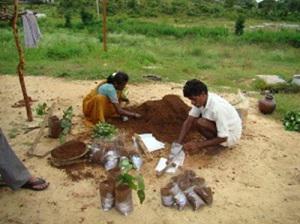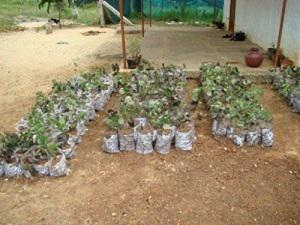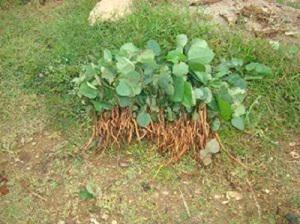Anuradha Maniyam
This project examines the establishment of nurseries, awareness, generation and large-scale plantation of Red Sanders in different areas for long-term conservation.

Transplantation of Pterocarpus santanlinus saplings to polybags.
The main objective of the project is to conserve Red Sanders an endangered, rare, endemic and red listed taxon of South India. This fabulous tree ranks among finest woods in the world, a source of natural dye Santalin and have several medicinal properties. The long lasting aim of this project is to bring out a system of working which would ensure its conservation and sustainable production of quality saplings. Major activities planned in this programme are – collection of seeds, coppice cuttings and saplings from the wild from various geographical locations. These include Seshachalam Reserve Forests, Kadapa, Ganganehalli, Vempalli, Tiruvalluvar Districts of Tamil Nadu.

Transplanted Pterocarpus santalinus saplings maintained in nursery.
Establishment of nurseries would be done. In these nurseries, seedlings, rooting the coppice cuttings and transplantation of wild saplings collected from forests would be undertaken. During collection of these wild saplings it is ensured to collect the small plants which are growing in the threatened regions, where forest fires are quite often. Thick populations which germinated under the shades of trees would be carefully uprooted and transplanted to polybags in the nursery. This will ensure the protection of naturally germinated plants which other wise die because of competition and other factors.

Pterocarpus santalinus saplings rescued from wild being brought to nursery.
These saplings would be distributed to NGOs, schools, colleges and farmers. Awareness camps would be done in villages and vicinity areas with an objective of growing and protecting the tree. Training programmes would be conducted and propagation techniques would be taught to farmers. Regular feed backs would be collected from the places where plantations are being done. Continuous supply of saplings would be ensured for the motivated organisations and our volunteers would monitor the growth of the plants after planting. This programme will be extended to various other areas of South India by involving people with conservation aptitude.